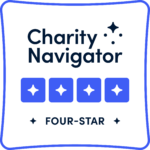BY JOHN T. AQUINO, The Food and Drug Administration is underresourced and cannot fulfill its mission as a safety organization grounded in cutting-edge science until it receives more funding
and increases collaboration with academia and industry, speakers said at a congressional briefing March 24.
Rep. Rosa DeLauro (D-Conn.) gave the keynote remarks at the briefing, titled ‘‘Science and Progress at the FDA: Realizing the Return on Investment from Biological Research.’’ She said that improving the science capabilities of FDA in order to restore the agency’s original mission has been the focus of her work as chairwoman of the House Agriculture-FDA Appropriations Committee and co-chair of the House Steering and Policy Committee.
‘‘FDA was originally intended as a safety agency guided by cutting-edge scientific knowledge,’’ DeLauro said. But the goal of drug safety was not satisfied when it approved GlaxoSmithKline’s diabetes drug Avandia (rosiglitazone). ‘‘The only study that said it was safe came from GSK,’’ DeLauro said. The Senate Finance Committee subsequently determined that GSK was aware of possible cardiac risks associated with Avandia years before the connection was made in a widely discussed 2007 journal article (4 LSLR 173, 2/26/10),
DeLauro said, and a study by the Mayo Clinic published March 18 in the British Medical Journal found that almost 90 percent of scientists who wrote positive articles, reviews, or commentaries about Avandia had financial ties to GSK.
‘‘We need to prevent the view that these situations are part of a systemic problem with our regulating agency. We need to show that our evaluation of a drug is based on scientific knowledge and not the promotion of the drug’s sponsor,’’ DeLauro said.
To achieve this, the United States needs to improve the resources at FDA to realize the return on investment from biomedical research and reach the goal of ensuring drug safety, DeLauro said. DeLauro noted that President Obama’s FY 2011 budget would increase FDA’s budget authority by 6 percent, including $25 million allocated to regulatory science.
Change Like Building Airplane While Flying.
Dr. Jesse L. Goodman, FDA chief scientist and deputy commissioner for public health, said that 21st century medicine is not being applied in drug review now. ‘‘We need to work more productively with others, accept the innovations that they have put in the pipeline, make them more accurate, and apply them to the evaluation process,’’ Goodman said.
‘‘A huge component of this,’’ he continued, ‘‘is partnerships. Even industry now knows that the model of going it alone does not work. FDA can be in a position to catalyze change if we have the tools and resources.’’
Goodman acknowledged that FDA may have been risk-adverse in the past but said that the biopharma industry had as well. ‘‘It doesn’t benefit anyone if the best science is not being used to solve problems,’’ Goodman said.
Max Wallace, chief executive officer of Accelerate Brain Cancer Cure (ABC), said there are different types of risk—medical, scientific, and financial. ‘‘Capital is rocket fuel that drives the vehicle. But it’s a finicky rocket fuel. It doesn’t care where it goes. It is without a soul. It hates risk. If it isn’t directed to science, it will go somewhere else,’’ Wallace said.
‘‘If FDA becomes a risk component to the endeavor of drug safety and efficacy rather than a collaborative component, we have a problem,’’ Wallace said.
Goodman likened making the appropriate changes at FDA to building an airplane while it is flying. ‘‘If people were mice, there would be no cancer. But we’re treating humans, not mice. We need the tools to get this right.’’
Goodman said that scientific personnel are a major part of the resources FDA needs. Staffing has just been restored to 1994 levels as a result of the 2010 appropriation, he said. ‘‘As much as we need collaborations, we’re very thin in our ability to engage in them. We need to be able to enable our staff to do this. If a tree falls somewhere, and our staff isn’t engaged, doesn’t know about it, doesn’t hear it fall, isn’t part of cutting it down, then it really hasn’t happened,’’ Goodman said.
FDA Transformation Needed. Goodman said that FDA really needs a five- to 10-year building effort to become a partner in creating the science of the future. ‘‘We need to transform the FDA culture from being a person struggling to keep his or her head above water to swimming ahead as a scientific leader.’’
Dr. John Marshall, director of clinical research at the Georgetown-Lombardi Comprehensive Cancer Center, used war analogies to continue Goodman’s point that 21st century medicine is not being used today. ‘‘Phase III clinical trials is a World War I approach to medicine. We give the drug to everyone in the hope that a few will benefit. It doesn’t work. Treating cancer is like fighting the war on terror. Under a microscope, cancer cells look alike. But they can’t be treated alike.’’
Ellen Sigal, chair and founder of Friends for Cancer Research, said, ‘‘FDA is under-resourced. It cannot fulfill its mission. It needs resources. It needs collaborations.’’
Marshall agreed. ‘‘If we are asking FDA to be our oversight, it needs insight. It needs more funding, it needs more resources, especially partners,’’ he said.

